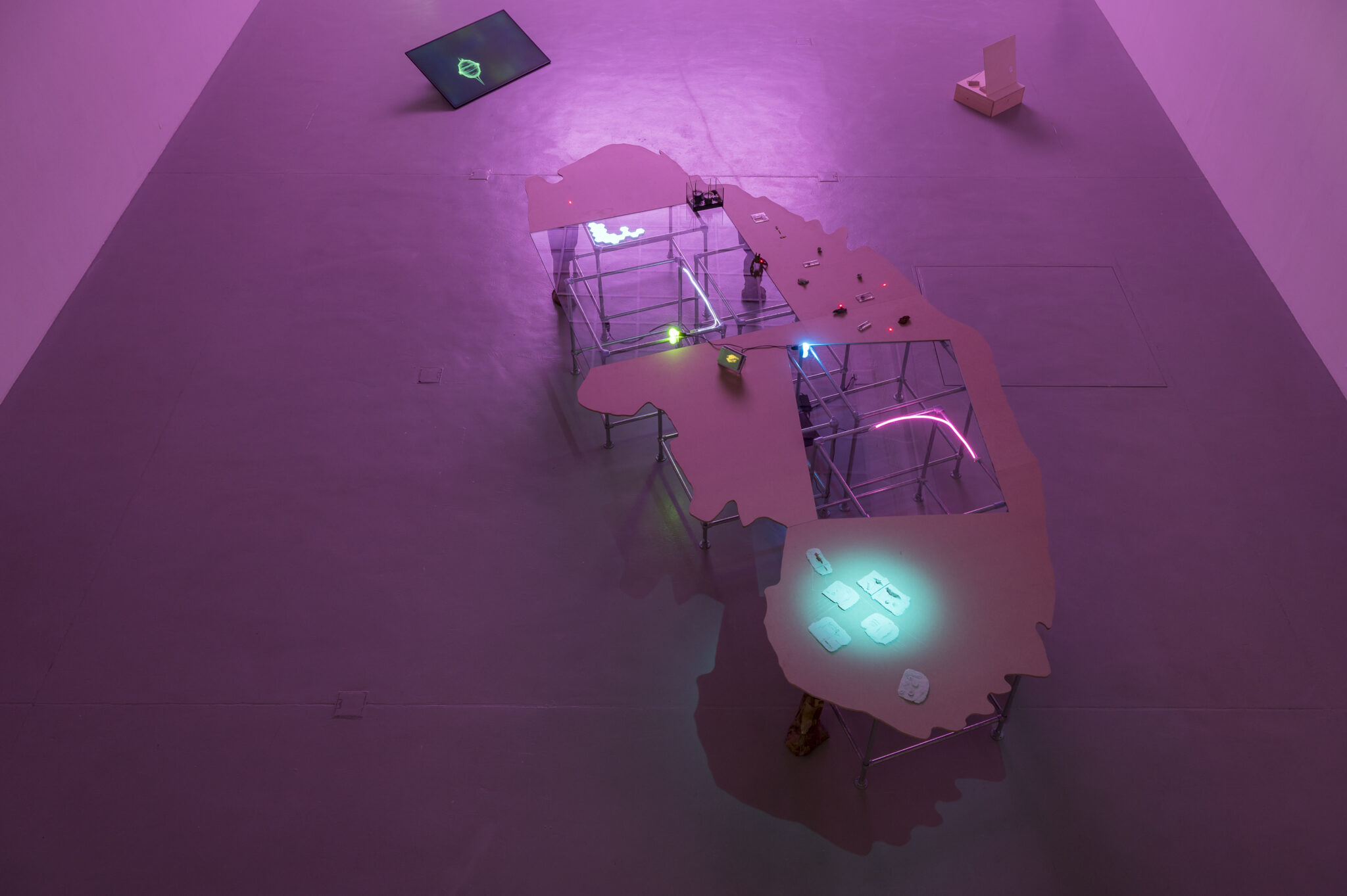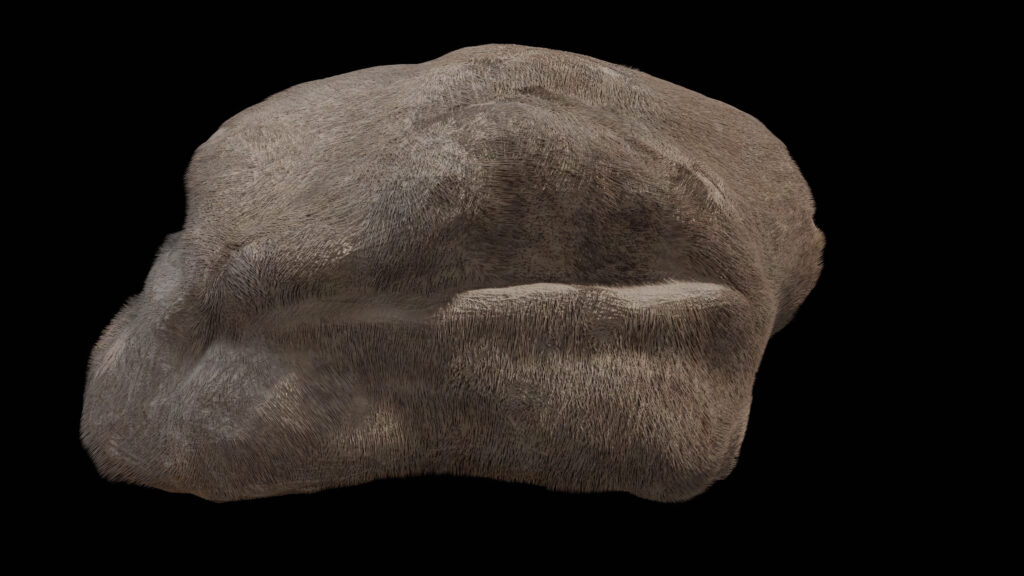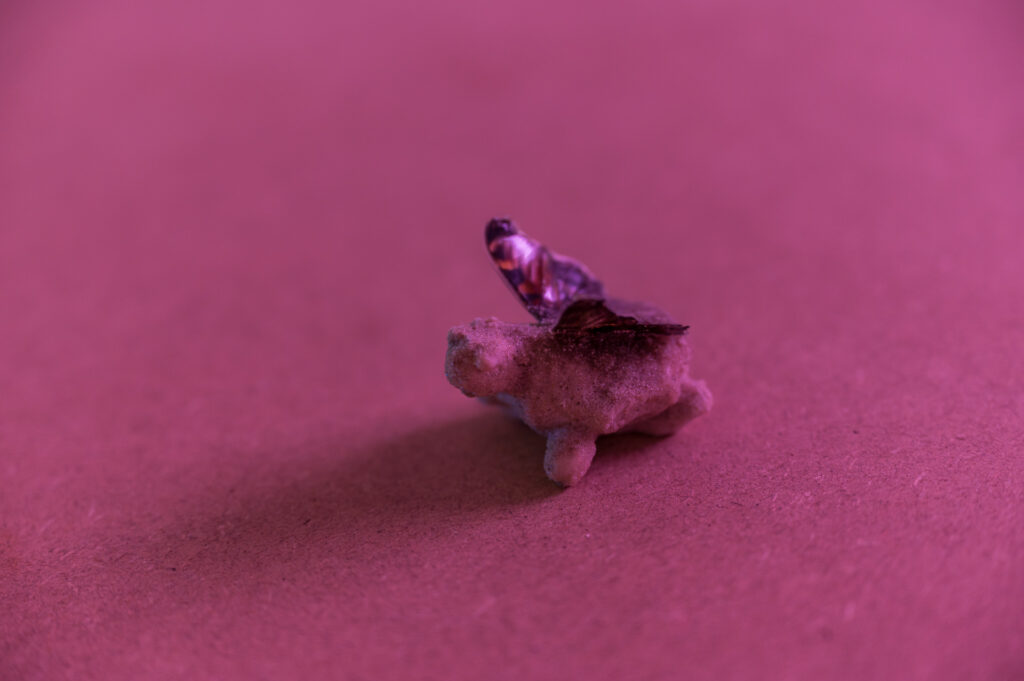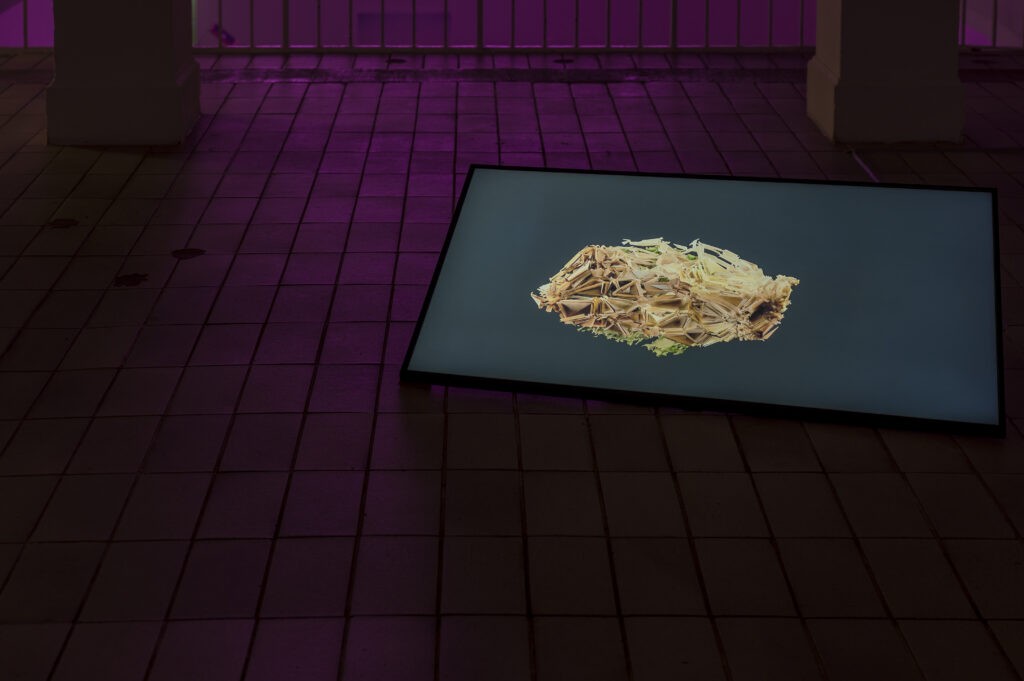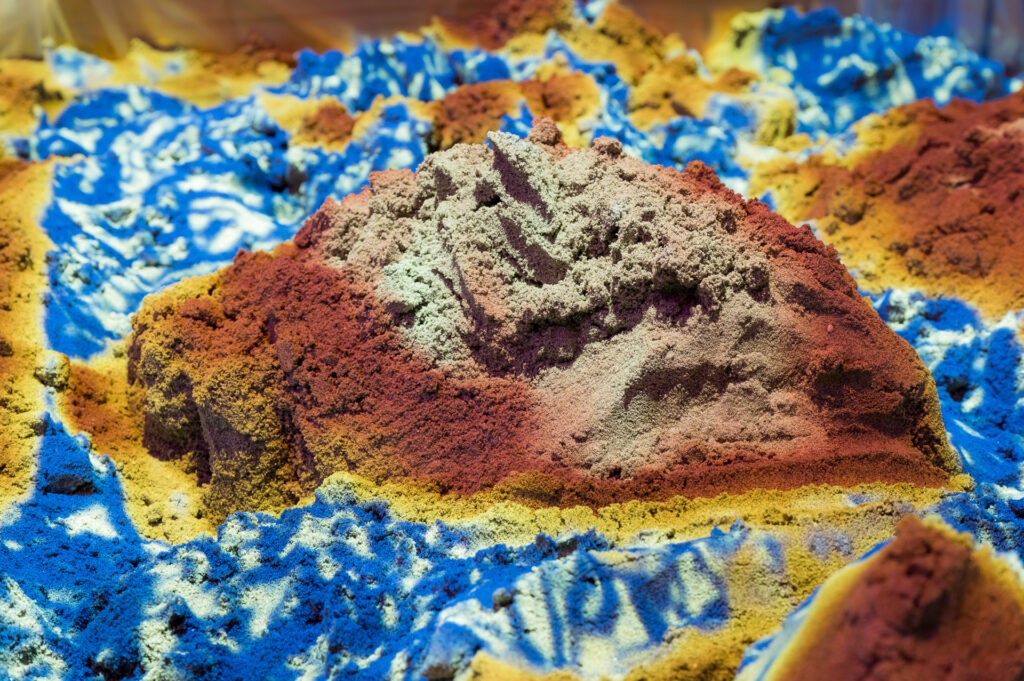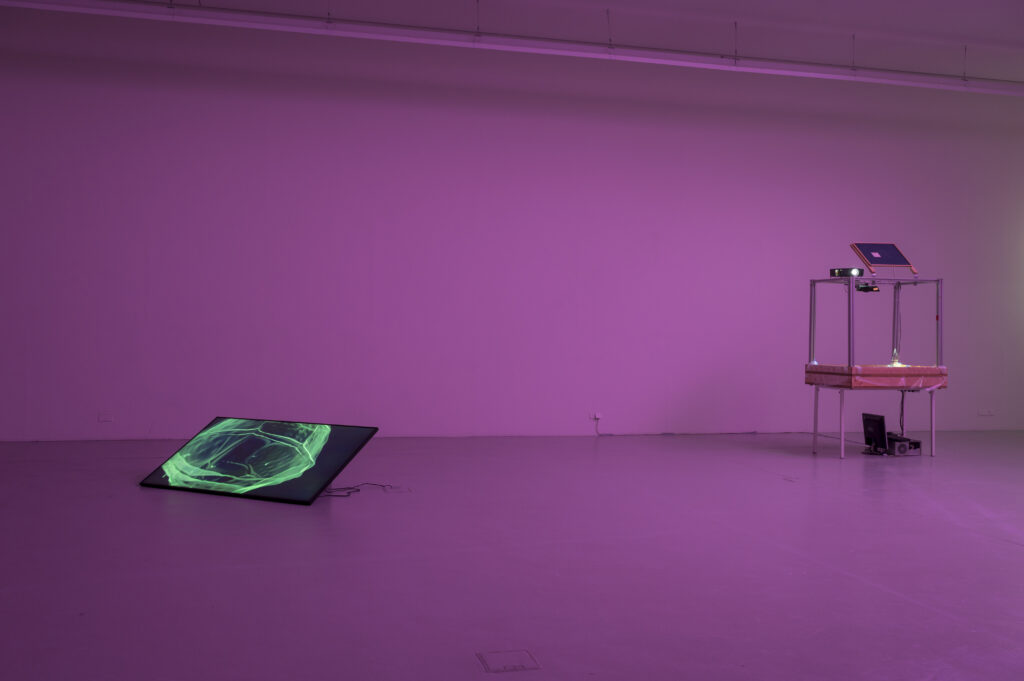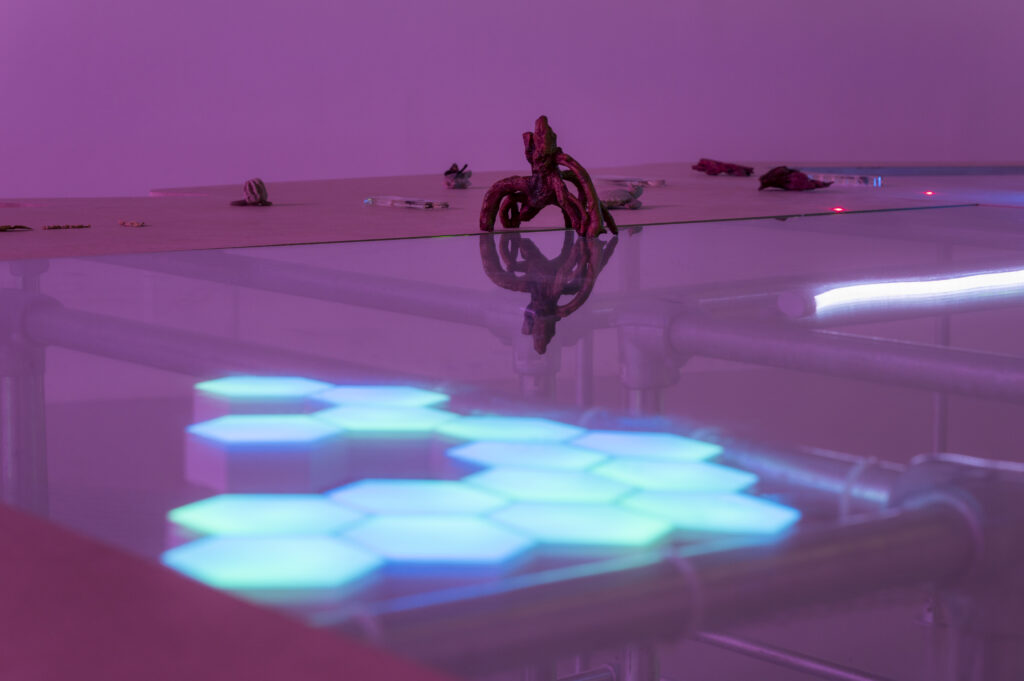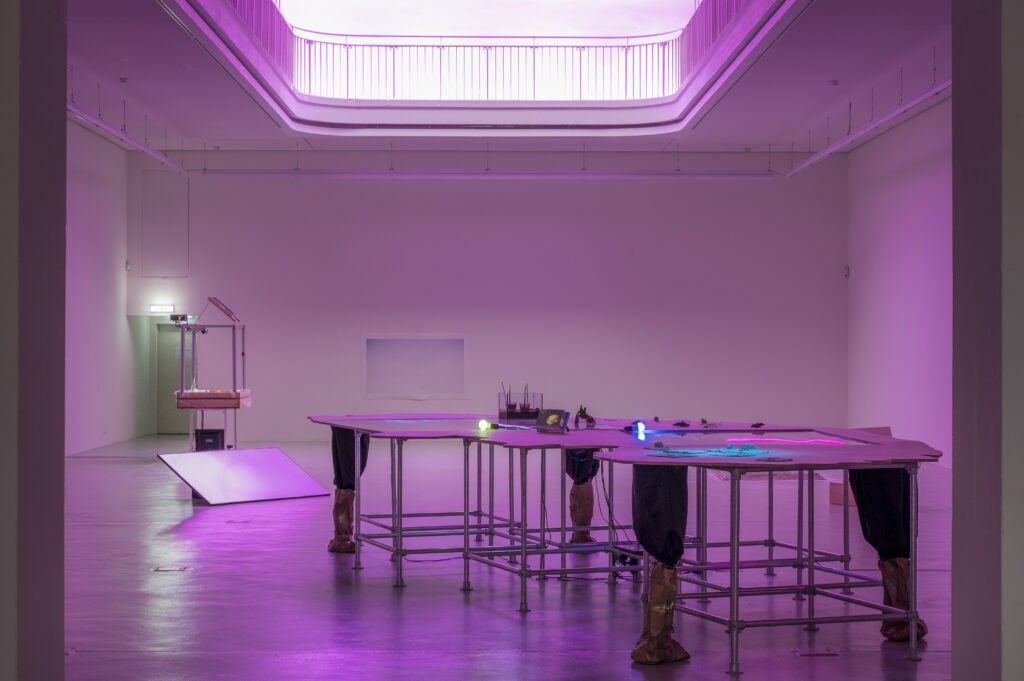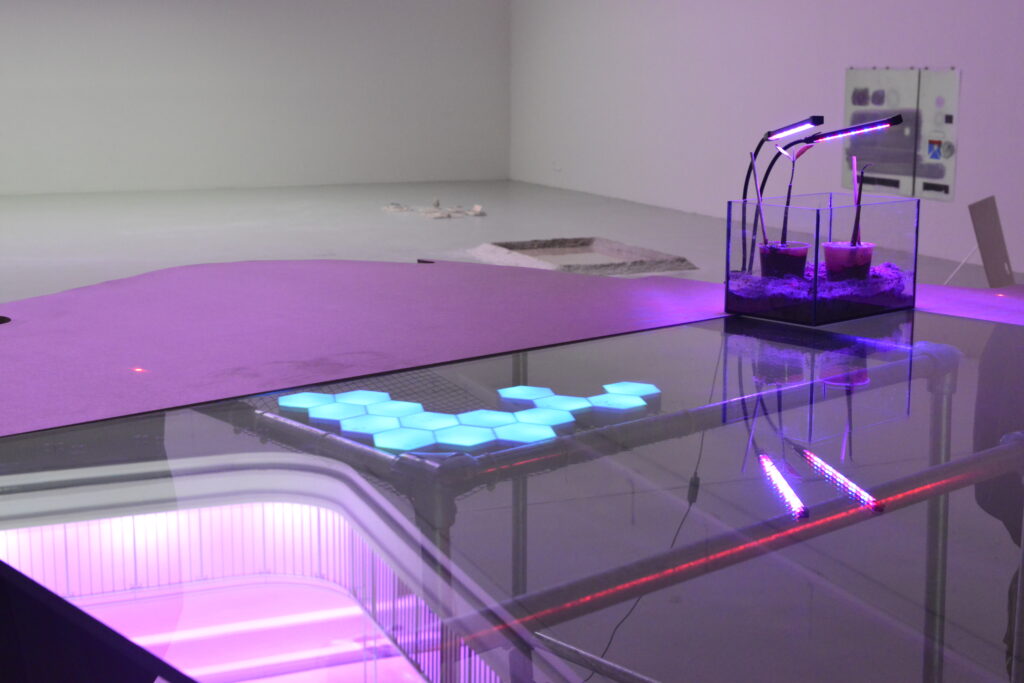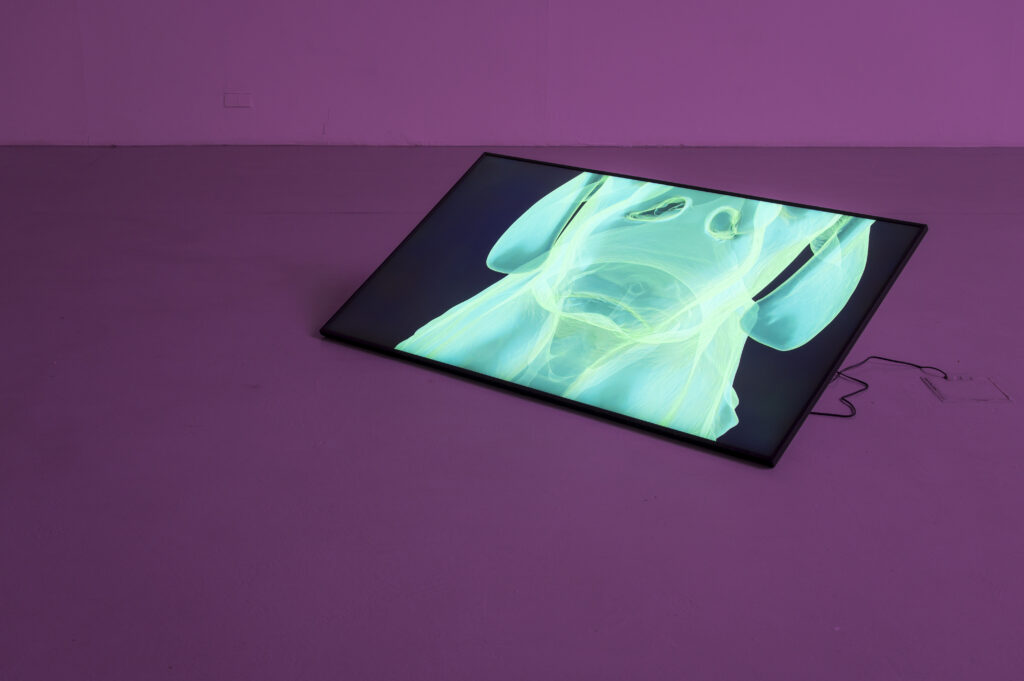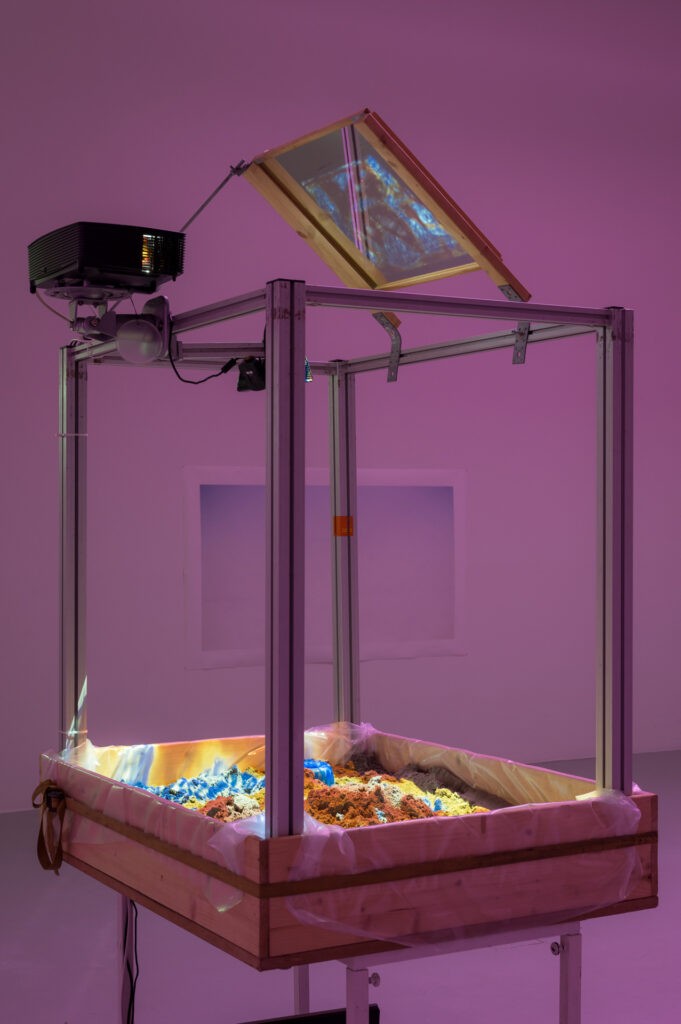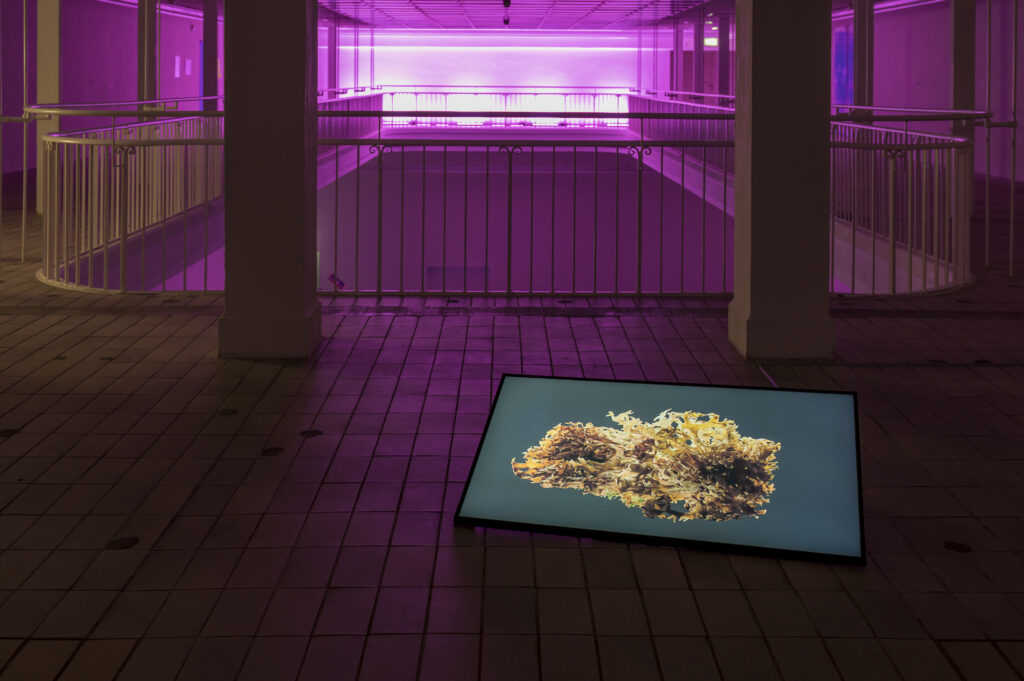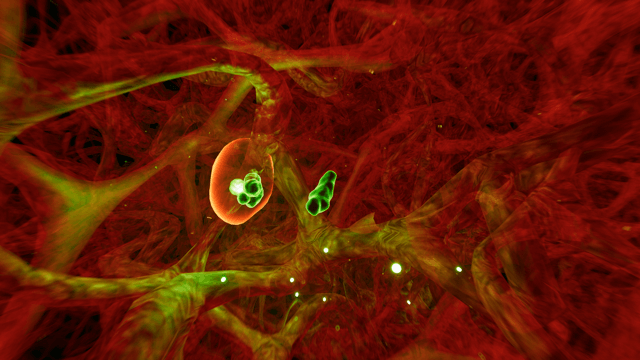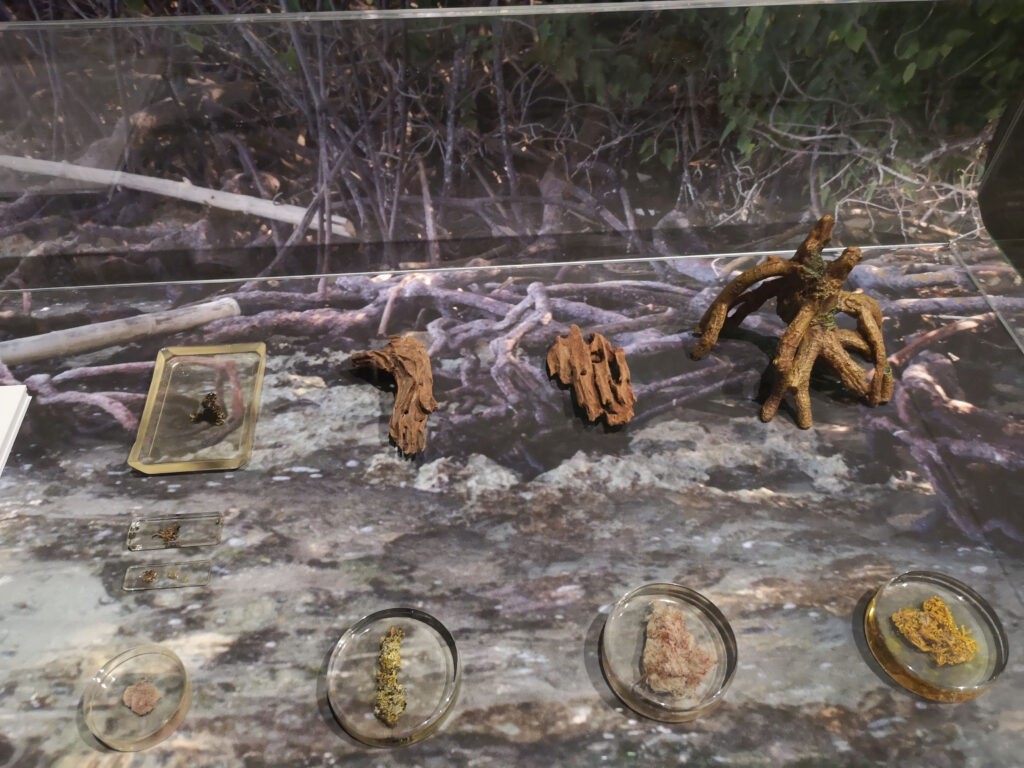Together with Goutam Ghosh and Bodhisattva Chattopadhyay Susanne M. Winterling founded The Kalpana (Sanskrit: create, imagine) in 2016. Their collective work centres on what they call the “speculative desert”. Against the backdrop of climate change and increasing desertification sweeping large parts of the world, The Kalpana examines the desert as a site of future visions and science fiction imaginaries. Mapping the speculative desert by three intersecting approaches: geo-cultural, science-fictional and bio-artistic, the respective artistic and cultural research fields of the three Gosh, Chattopadhyay and Winterling unite.
The first institutional exhibition of The Kalpana in desert times at Kunstverein Freiburg consists of two main elements: a map of the speculative desert planet and an accompanying glossary. The interactive, three-dimensional desert map presents the collective’s research on the topic of future species, future artefacts, future codes and invites the viewer to speculatively explore the desert planet. The sources of inspiration are first the collective’s research trips to the Great Rann of Kutch desert salt marsh on the border between India and Pakistan, as well as to the nearby archaeological site Dholavira, which is attributed to the Indus Valley civilisation. Secondly, the collective draws inspiration form desert planets in science fiction, such as fictional descriptions of Mars. The focus lays on the development of possible survival strategies in a desert landscape by learning from and being with other life-forms such as micro-organisms, plants, lizards and camels and non-life-forms, such as mountain ranges and sand formations.
Among many other new works by Susanne M. Winterling, the exhibition includes the hologram of a camel nose (2020). With their body parts and organs, camels have adapted perfectly to the extreme climate of deserts. Through their noses, they absorb the water vapor from the exhaled air to cool their blood, eyes and brain. The show also contained the recent CGI-piece shape shifting dog (2019), based on reports of street dogs in Mumbai, which had turned blue due to chemical water pollution are the starting point for the work that shows the transformation of a dog into a dinofagellate. These unicellular organisms living in the sea are a reminder that the origin of all life comes from the sea and the fact that the creation of the biosphere – the „terraforming“ of the blue planet – is essentially based on microorganisms.
